Whether you’re looking for an easy way to eat healthier, or trying to cut back on certain specific ingredients, reading an ingredient label is one of the simplest ways to give your health a boost.
Below, we give our biggest do’s and don’ts when it comes to reading an ingredient label, and also reveal how to read an ingredient label for food allergens. Read on to discover how to read an ingredient label and how doing so can help you choose healthier foods.
General Do’s and Don’ts for Reading an Ingredient Label
Do:
Pay Extra Attention to What Comes First - The most important thing to know about ingredient labels is that ingredients are listed in order of their quantity. In other words, the ingredients that are used most heavily in the food or recipe will be listed first. This becomes important if you are trying to cut down on certain ingredients, such as sugar. In that case, you would want to opt for a ketchup with ingredients of tomatoes, water, and sugar, rather than a ketchup that lists its ingredients as sugar, water, and tomatoes. Even though the list is the same, the first ketchup would be significantly lower in sugar because it is listed much farther down as an ingredient.
Watch Out for Sneaky Buzzwords and Disguises - Sugars, sodium, and fats - oh my. Many food manufacturers have caught on that consumers are keeping their eyes out for these ingredients. As a result, these ingredients may sometimes be disguised under several buzzwords and monikers. For example, sugar may be listed as high fructose corn syrup, glucose, fructose, maltose, or galactose (and a bunch more). Fat, too, can be disguised in the form of lard, hydrogenated oils, tallow, or shortening.
Prioritize Foods with Short Ingredient Lists - Given the first and second point, one of the easiest ways to eat healthier is to simply opt for foods with short ingredient lists that you can easily understand. This is a pretty simple practice and it can help you cut down on additives and preservatives in the long run. If you really want to go the extra mile, you can also prioritize foods with no ingredients at all, AKA whole foods.

Don’t:
Don’t Automatically Fear Unfamiliar Words - It can be tempting to steer clear of all ingredients you don’t immediately recognize, but this can sometimes be a mistake too. Exotic ingredients like amaranth, quinoa, farro or spelt may trigger alarm bells because they’re less common, but it turns out all of them are nutrient-rich whole grains. Even chemical-esque names aren’t always bad. Ascorbic acid is vitamin C and thiamine mononitrate is vitamin B1. Other ingredients, like sunflower lecithin, simply modify the texture and mouthfeel of foods while offering some health benefits (lecithin is a fat that is essential for the cells of the body). Instead of dismissing an unrecognized ingredient automatically, it can be worthwhile to briefly Google it and get the scoop on what it really is.
Don’t Take the Front of the Box/Packaging at Face Value - Nearly any processed food can find some way to make a health claim. Common culprits include: “made with whole grains,” “zero trans fats,” “low-sodium” or “high fiber.” These things are good, but it doesn’t necessarily mean the food in question is healthy. For example, plenty of foods can be made with whole grains but loaded with sugar and fat. That’s why it’s always a good idea to read the full ingredient label.
How to Read an Ingredient Label for Food Allergies
Wondering how to identify allergens on food labels? The good news is that there are laws requiring manufacturers to let you know if certain allergens are included in their product.
If foods contain these allergens, manufacturers are required to list them explicitly:
- Peanuts
- Tree nuts, such as almonds, walnuts, and pecans
- Milk
- Eggs
- Fish
- Shellfish
- Soy
- Wheat
You can also look to see if there are any certifications associated with the product. Many brands go the extra mile to get their products certified to prove that they are free from certain ingredients.
For example, Maxine's Heavenly cookies are certified vegan, meaning they don't contain any animal products like milk, eggs, or butter; certified gluten free, meaning they don't contain any wheat; certified kosher, meaning it ispermitted by Jewish dietary law, and verified non-GMO, meaning they weren't made with any genetically modified crops.

Bottom Line: How to Choose Foods with Healthier Ingredients
When it comes to reading ingredient labels, pay the most attention to the first couple of ingredients, since those make up the majority of the food. Keep an eye out for any pesky extra sugars or fats being disguised with buzzwords. To minimize additives and preservatives, stick to foods with short ingredient lists, or whole foods.
If you’re looking for homemade-style cookies made with wholesome, natural ingredients, be sure to check out Maxine’s Heavenly cookies.





